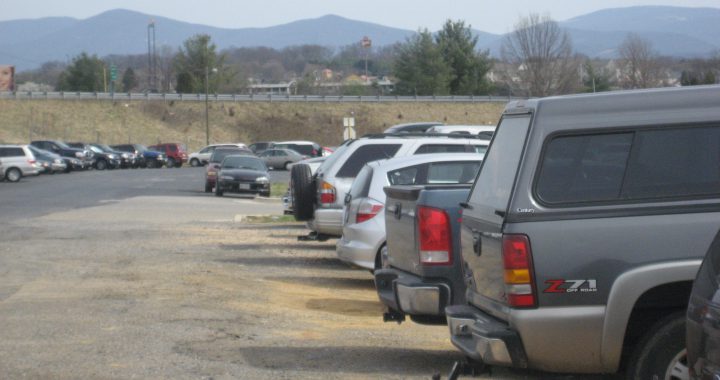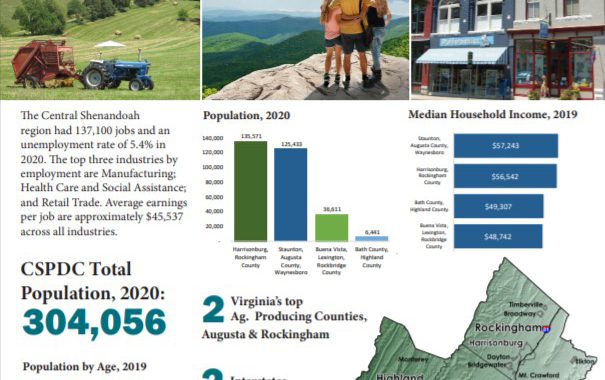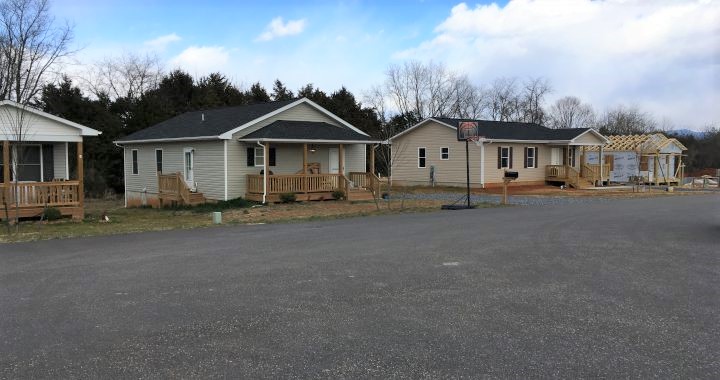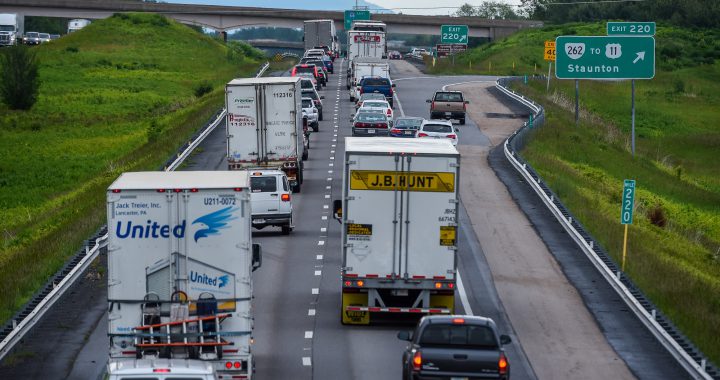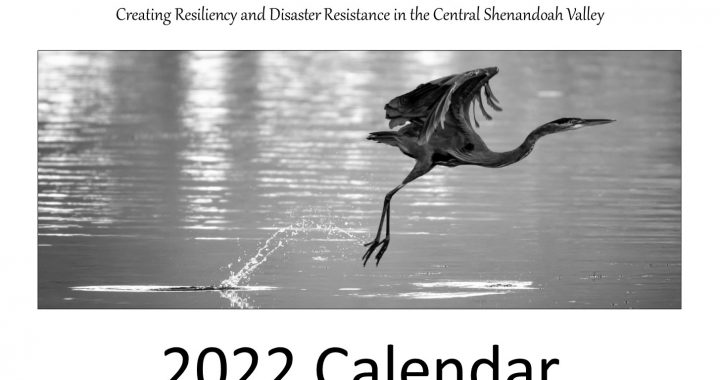News
Waynesboro Park and Ride Lot Upgraded
The expansion of the Town Center Park and Ride commuter lot in Waynesboro, which began construction in March 2022, was completed in November 2021. The $1 million project increased parking capacity from 120 to 175 parking spaces, installed a bus pull off and two covered bus shelters, and repaved and improved on location lighting. Additional amenities included bicycle racks, sidewalks, landscaping, and infrastructure to accommodate future electric vehicle charging stations.
In the first two months of operating, the Afton Express stopped at Town Center, at an existing bus shelter near Target. Afton Express buses now stop at the new, dedicated bus pull off in the enhanced commuter lot.
2021 Facts & Figures Documents Published
One of the CSPDC’s roles in economic development is to be a resource for data about the region and the PDC’s localities. To help support this important function, the CSPDC creates and distributes Facts & Figures, an easy-to-read snapshot of each sub-region’s people, jobs, schools, and other unique attributes. The 2021 Facts & Figures documents are now available on the CSPDC website.
PDC Housing Development Program Kicks-Off
In July, the CSPDC announced that it received $2 million in funding towards the development of new housing initiatives in our region through Virginia Housing’s PDC Housing Development Program. Through this grant, the CSPDC will award gap funding to non-profit, private, and public sector developers to go toward the creation of at least 20 affordable housing units in the region by July 2024.
On December 9th, the CSPDC held a housing roundtable – the meeting provided an overview of the PDC Housing Development Program, and provided information on the requirements and timeline for the grant. CSPDC staff also provided a data overview on the ‘State of Housing’ in our region, and facilitated a discussion around affordable housing opportunities and challenges. More than 70 participants registered the event, including representatives from member local governments, non-profits, and private development firms.
On January 3rd 2022, the CSPDC will release a Request for Proposals for affordable housing developers seeking grant funds. The RFP will remain open for a month, and will then be reviewed by CSPDC staff. The CSPDC expects to announce funding decisions by March 2022. More information on the PDC Housing Development Program, including RFP information and grant guidelines, can be found here. The CSPDC will release guidelines in advance of the grant application on Wednesday, December 15th.
$1.2 Trillion Infrastructure Investment and Jobs Act Passed in November
President Biden signed the $1.2 trillion Infrastructure Investment and Jobs Act (IIJA) into law on November 15, 2021. The bill covers spending from FY22 through FY26, and includes reauthorization of the FAST Act, the prior five-year federal transportation spending plan.
Of the $1.2 trillion, $550 billion is new spending, and $284 billion is allocated for transportation improvements. The State of Virginia will receive $7 billion for highway improvements, $1.2billion for public transportation, $738 million for water infrastructure, $537 billion for bridge repairs, $106 million for electric vehicle infrastructure, and $65 million for broadband.
Funding through existing programs will begin within the next six months. New programs, such as for electric vehicle infrastructure, will likely take more time to begin. CSPDC staff will continue to track the bill, and will inform localities of upcoming IIJA funding opportunities
2022 Project Impact Calendars Now Available
The 2022 Shenandoah Valley Project Impact Preparedness Calendar will be available for pick-up the first week of December at local government buildings and libraries or by contacting the CSPDC. The calendar contains preparedness tips and mitigation strategies for dealing with severe weather, emergencies and disasters, as well as fun holidays for each day of the year.
This year, sponsorship of the calendar is being provided by Sentara RMH Medical Center. The theme of the 2022 calendar is “Community Heroes.” Using historic photos, each month highlights different ways members of our communities have stepped up to help us all navigate through the COVID-19 pandemic.
For additional information, contact Rebecca Joyce, at rebecca@cspdc.org or 540-885-5174 ext. 112.
Announcements
Please stay tuned for events and more information from the CSPDC.
Archives
- February 2025
- January 2025
- December 2024
- October 2024
- September 2024
- August 2024
- July 2024
- June 2024
- May 2024
- April 2024
- March 2024
- February 2024
- January 2024
- November 2023
- October 2023
- September 2023
- August 2023
- July 2023
- June 2023
- May 2023
- April 2023
- March 2023
- February 2023
- January 2023
- December 2022
- October 2022
- September 2022
- August 2022
- July 2022
- June 2022
- May 2022
- April 2022
- March 2022
- February 2022
- January 2022
- December 2021
- November 2021
- October 2021
- August 2021
- July 2021
- June 2021
- May 2021
- April 2021
- March 2021
- February 2021
- January 2021
- December 2020
- November 2020
- October 2020
- September 2020
- July 2020
- June 2020
- May 2020
- April 2020
- March 2020
- February 2020
- January 2020
- November 2019
- October 2019
- September 2019
- June 2019
- May 2019
- April 2019
- March 2019
- February 2019
- January 2019
- December 2018
- October 2018
- September 2018
- August 2018
- July 2018
- June 2018
- May 2018
- April 2018
- March 2018
- February 2018
- January 2018
- December 2017
- November 2017
- October 2017
- September 2017
- August 2017
- July 2017
- June 2017
- May 2017
- April 2017
- March 2017
- February 2017
- January 2017
- December 2016
- September 2016

